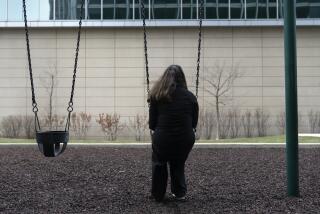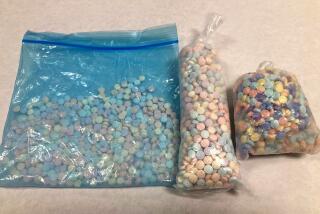Psychiatric Drug Use by Youths Surges, Study Says
- Share via
CHICAGO — The number of U.S. children and adolescents on Ritalin, antidepressants or other psychiatric drugs surged from 1987 to 1996, a trend some experts say is continuing.
The study did not determine whether the youngsters were properly diagnosed and treated. Some experts have warned that American children are being overmedicated. But others say not all youngsters who need treatment are getting it.
The study expands on previously published data on preschoolers and includes findings on young people through age 20.
University of Maryland researcher Julie Magno Zito and colleagues reviewed data on nearly 900,000 patients enrolled in Medicaid programs in two states and a health maintenance organization in the Northwest. By 1996, about 6% of all participants had prescriptions for psychiatric drugs.
Psychiatric drug use tripled in the HMO patients and in those in a Medicaid program in the Midwest. It doubled in the second Medicaid program, in a mid-Atlantic state. The states were not identified.
Stimulants such as Ritalin for treating attention deficit disorders were the most commonly prescribed psychiatric drugs for children in 1996, followed by antidepressants and mood-stabilizing drugs for “acting out.”
The findings probably reflect nationwide practice, and other figures suggest the trend has continued since 1996, Zito said.
“Increased usage of these medications demands a better understanding of why they are being used and how effective the medications are proving to be,” she said. “Safety for young children must also be assessed because children are not ‘little adults’ when it comes to drug safety.”
The study appears in January’s Archives of Pediatrics and Adolescent Medicine.
An accompanying editorial said that viewed optimistically, the findings may reflect a broader awareness of mental problems in youngsters.
But the editorial author, Dr. Michael Jellinek of Massachusetts General Hospital, said the study reveals some disturbing trends, including increases in drug use in children at a time when research supporting such use was scant.
He also said the figures do not indicate whether the diagnoses of conditions such as attention deficit disorders, anxiety and depression were valid and whether the children received counseling.
Dr. David Fassler, a child and adolescent psychiatrist in Vermont, said the increases are not “out of range,” given a 1999 government report suggesting that about 20% of U.S. youths have signs of psychiatric ailments.
Fassler, an American Psychiatric Assn. trustee, said other research shows that “the majority of children with psychiatric problems still are not receiving the treatment they need.”






